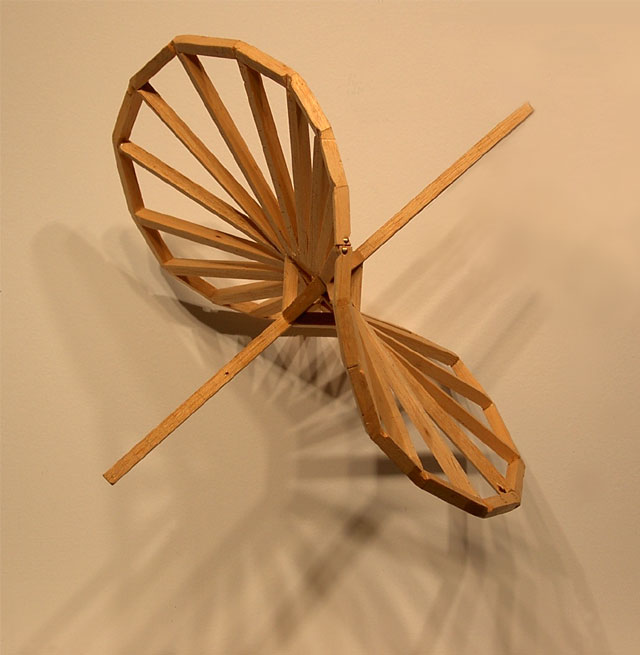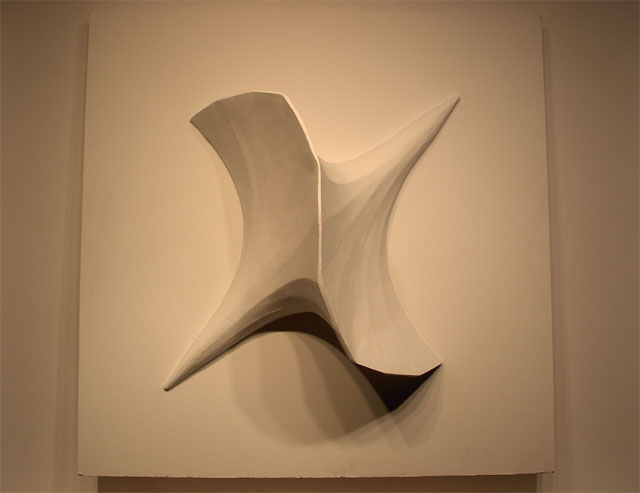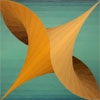 | ||||||
 | ||||||
The Spiral of the Infinite transformation of the human being.
By Yves Jeanson, sculptor.
This sculpture was built in 1988 following a challenge from a friend of mine who worked in a great scientific laboratory in Montreal. He maintained that it was impossible to build this shape such as seen on a photo of the drawing I had given him. Several researchers and engineers, that were next to my friend's working place, were intrigued and fascinated by this drawing which drew their attention every time they went by it. I thus decided to take up the challenge, and to build the 3D shape.
The idea came to me that the first thing which I had to do, was to create an intermediate model, from which I could measure with a false set square, the angles which would be later transferred on a stiff cardboard, on which I would draw the ribs of each of the beams composing the shape. Using balsa wood, I made the heart of the model, the XYZ axis, and then I transposed onto it, a sinusoidal ellipse which would reproduce the shape such as seen on the drawing. In order to create this ellipsoidal and sinusoidal ring, I needed a good dose of imagination in finding how to cut each of the small wooden segments, which had no repetitive angle, because besides turning on the 360 degree of the ellipse, the segments curved and bent downward, then curved again and bent upward, to create the effect of the sinus curve such as seen on the drawing below.
Having managed by trial and error to find the good cutting angles in the three axis, the ring was constructed surprisingly in rather a short time. Then with a false set square, I directly measured the angles, marked them down, and transferred them on a stiff Styrofoam cardboard, and drew a series of straight lines, there which all together would give a curve that would be cut from the Styrofoam in order to obtain the necessary ribs to make the shape.
For the final assembly, the ribs were held together by two half-rings fastened on a plywood, then I filled the space left between each ribs wiht filling material. Two of the ribs were too blunt to be used. It was necessary to correct the angle to harmonize the sinusoidal and elliptical form. Once this difficulty was resolved, the completion was relatively simple by injecting into the voids left between the ribs, pressured Styrofoam, then liquid plaster held in place by a wire netting, and metal rods to give strength, and finally a smooth plaster finish hand sanded, and colored with white acrylic paint. The shape was a success. It was identical to the original drawing but in the round. I had filled the challenge to the great surprise of my skeptic friend. The shape is approximately 660 mm square, and it is fixed to a square plywood of 760 mm x 760 mm.The original drawing which dates from 1967, comes from the work of the artist philosopher and the thinker, Zanis Waldheims (1909-1993). The name which I gave to the sculpture, summarizes the intention of the thinker. As suggested by the original drawing, there is a transformation. A point of departure and a point of arrival.
The Spiral of the Infinite Transformation




